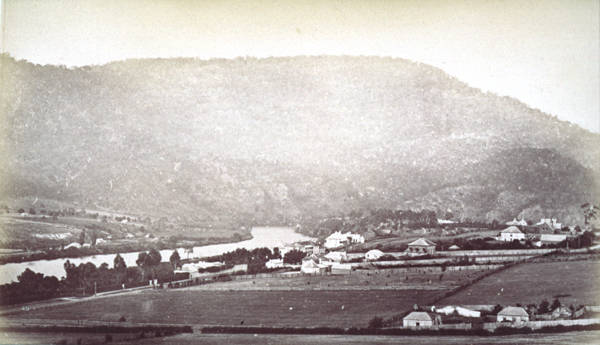 |
 |
|
Derwent Valley
The Derwent Valley's first settlers arrived soon after Europeans colonised Tasmania in 1803, but the main town of New Norfolk was not established until the evacuation of Norfolk Island in 1807–08. The district was originally called The Hills, but the settlers adopted the name 'New' Norfolk. The town and district have a rich history. One Norfolk Island evacuee was Betty King, whose headstone in the Back River churchyard claims she was the first white woman to set foot in Australia. Convict Denis McCarty became the district's first police constable and in 1818 built the colony's first arterial road, between Hobart and New Norfolk. The original St Matthew's Anglican Church (1825) claims to be Tasmania's oldest church, and St Paul's Uniting Church (1835) is the oldest former Methodist church still in use in Australia. There were attempts to make New Norfolk the colonial capital until the idea was vetoed in 1826. A convict hospital was established in 1827, its main building being Willow Court. It developed into the Royal Derwent Hospital, Tasmania's main centre for treating the mentally handicapped. Hops were established at New Norfolk in 1846 and became one of the Derwent Valley's most important industries. The Bush Inn (1825) is reputedly the oldest continually licensed hotel in Australia. In 1864 Australia's recreational fishery began when the first salmon were reared at the Salmon Ponds. The railway reached New Norfolk in 1887 and Glenora the following year. Telecommunications history was made in 1888 when Australia's first trunk line call was connected from Hobart to the Bush Inn Hotel. New Norfolk grew at a rapid rate in the twentieth century. Rich in soil and timber, the district's agricultural wealth was more easily exploited with the arrival of the railway, river steamers and hydro-electricity. The Pioneer Woodware Company established a peg-making industry at New Norfolk in 1926, and from 1941 Australian-made newsprint was produced at Boyer. Australian Newsprint Mills led the Derwent Valley into its most prosperous era, almost doubling New Norfolk's population. Boyer continues to supply the largest share of Australia's newsprint needs. The end of hydro-electric dam construction and the closure of the Royal Derwent Hospital tested the Derwent Valley, but the first years of the twenty-first century saw the arrival of mainland investors, the redevelopment of the former hospital site and recognition of the region's tourism potential. Further reading: D Bester (ed), The Derwent Valley, New Norfolk, 2001; J Cowburn & R Cox, New Norfolk's history and achievements, Series III, New Norfolk, [1986]. Damian Bester
|
Copyright 2006, Centre for Tasmanian Historical Studies |
